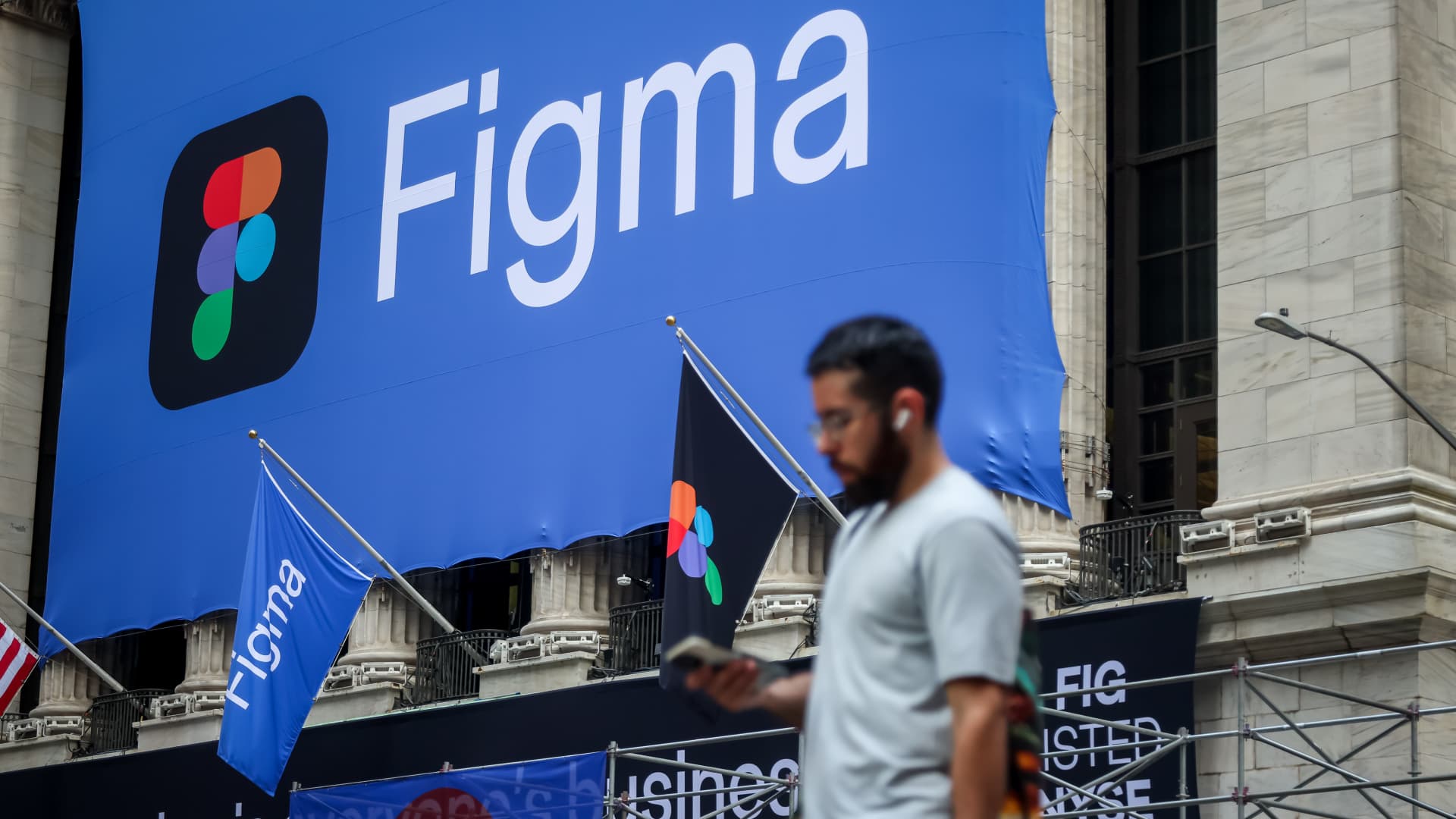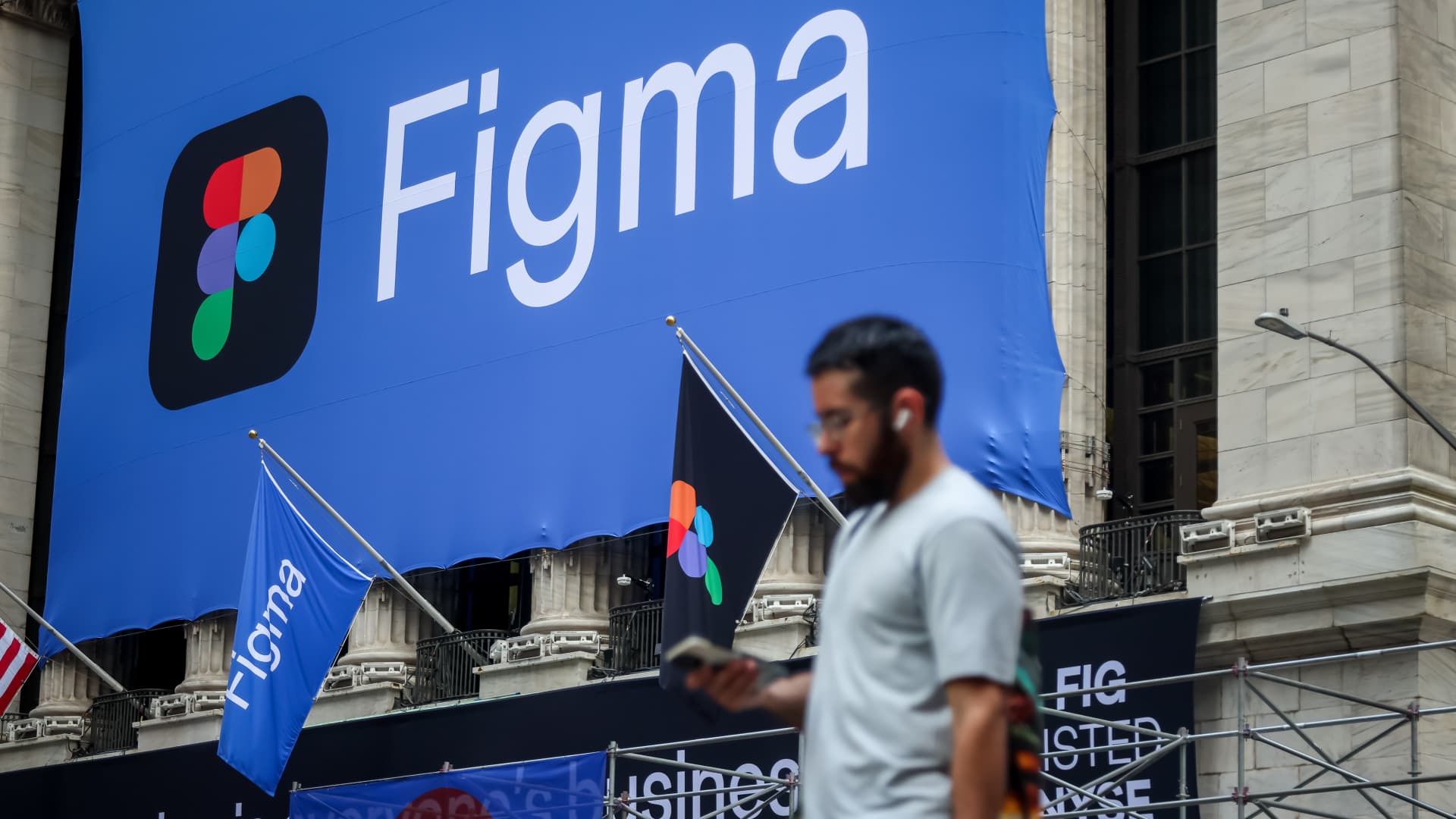The Phenomenal Rise of Figma: A Closer Look at Its Market Debut
A Record-Breaking Entrance
Figma’s initial public offering (IPO) has sent shockwaves through the tech industry. The collaborative design software company priced its shares at $33, only to see them skyrocket to an opening price of $85 on the New York Stock Exchange (NYSE). This remarkable surge, which more than doubled the IPO price, instantly valued Figma at approximately $50 billion. The stock’s performance was so impressive that trading was briefly halted due to volatility, with shares climbing past $112 shortly after opening. This level of market enthusiasm is particularly noteworthy given the recent skepticism surrounding tech IPOs.
The Path to Public Success
Figma’s journey to the public markets has been anything but straightforward. The company was once on the verge of a $20 billion acquisition by Adobe, a deal that ultimately collapsed. Rather than being a setback, this failed acquisition appears to have galvanized Figma, pushing it to forge its own path. Going public on the NYSE represents a significant milestone, providing Figma with access to capital markets that will fuel its expansion and innovation.
Strategic Pricing and Valuation
The decision to price the IPO at $33 per share was a strategic masterstroke. While some companies aim for the highest possible valuation during their IPO, Figma’s pricing strategy suggests a focus on attracting a broad range of investors and ensuring a smooth market debut. The initial surge in stock price indicates that the offering was attractively priced, leaving ample room for upside potential. This approach contrasts with instances where companies have overvalued their IPOs, leading to lackluster performance in the initial trading days.
Rewarding Early Investors
The successful IPO has resulted in substantial gains for early investors, particularly venture capital firms like Sequoia Capital. With Figma pricing its IPO at $33 a share, Sequoia stands to reap significant rewards from its early investment in the company. This highlights the potential for venture capital firms to generate substantial returns by identifying and supporting innovative companies like Figma.
The Power of Figma’s Business Model
Figma’s success is rooted in its innovative and user-friendly design software. The platform’s real-time collaboration features have made it a favorite among designers and teams working on digital projects. Key factors contributing to Figma’s value include:
Collaborative Design
Figma’s real-time collaboration features set it apart from traditional design tools. Multiple users can work on the same project simultaneously, streamlining the design process and fostering teamwork. This collaborative approach has resonated with users, making Figma a go-to platform for design teams.
Accessibility and Cloud-Based Platform
As a cloud-based platform, Figma is accessible from anywhere with an internet connection. This eliminates the need for local installations and facilitates seamless collaboration across different locations. The accessibility of Figma’s platform has contributed to its widespread adoption and user satisfaction.
Growing User Base
Figma has cultivated a loyal and expanding user base, ranging from individual designers to large enterprises. This network effect strengthens the platform’s value and competitive advantage. The growing user base also provides Figma with valuable data and insights that can drive further innovation and improvement.
Strong Revenue Growth
Figma has demonstrated impressive revenue growth in recent years, driven by increased adoption of its platform and the expansion of its product offerings. This financial performance has instilled confidence in investors and fueled the company’s valuation. The strong revenue growth also positions Figma for continued success as a public company.
Implications for the IPO Market
Figma’s blockbuster IPO could signal a potential resurgence in the IPO market, which has been relatively subdued in recent times. A successful debut from a high-growth tech company like Figma may encourage other private companies to explore going public, revitalizing the market and providing investors with new opportunities. However, it’s important to note that Figma’s success is not necessarily indicative of a broad market turnaround. Each company’s IPO is unique, and market conditions can change rapidly.
Navigating the Future
While Figma’s IPO is undoubtedly a triumph, the company faces both challenges and opportunities as it embarks on its journey as a public entity.
Competition
The design software market is competitive, with established players like Adobe and emerging startups vying for market share. Figma must continue to innovate and differentiate its platform to maintain its competitive edge. This will require ongoing investment in research and development, as well as a focus on user experience and customer satisfaction.
Maintaining Growth
As a public company, Figma will be under pressure to sustain its impressive growth rate. The company needs to continue attracting new users, expanding its product offerings, and entering new markets to meet investor expectations. This will require a strategic approach to growth, balancing short-term gains with long-term sustainability.
Economic Uncertainty
The current economic climate presents challenges for all companies, including Figma. Economic downturns can impact spending on software and design services, potentially affecting Figma’s revenue growth. To mitigate this risk, Figma must diversify its revenue streams and explore new markets and opportunities.
Despite these challenges, Figma also has significant opportunities ahead. The company can leverage its public status to raise capital for strategic acquisitions, expand its product offerings, and accelerate its international expansion. By continuing to innovate and adapt to changing market conditions, Figma can solidify its position as a leader in the design software industry.
The Broader Impact of Figma’s Success
Figma’s IPO is more than just a successful stock market debut. It represents a validation of the company’s innovative approach to design, its strong business model, and its potential for future growth. The IPO also serves as a reminder that even in challenging market conditions, companies with strong fundamentals and a compelling vision can thrive. Figma’s story could encourage other private companies to pursue their own IPO aspirations, providing a boost to the broader tech ecosystem.
Conclusion: A New Era for Figma
Figma’s explosive IPO marks the beginning of a new era for the company. With a strong market debut and a clear vision for the future, Figma is well-positioned to continue its growth and innovation. The company’s success serves as an inspiration to other tech startups, demonstrating the potential for disruptive innovation to drive market success. As Figma navigates the challenges and opportunities ahead, it has the potential to redefine the design software industry and set new standards for collaborative work. The future looks bright for Figma, and the company’s journey is one to watch closely.












